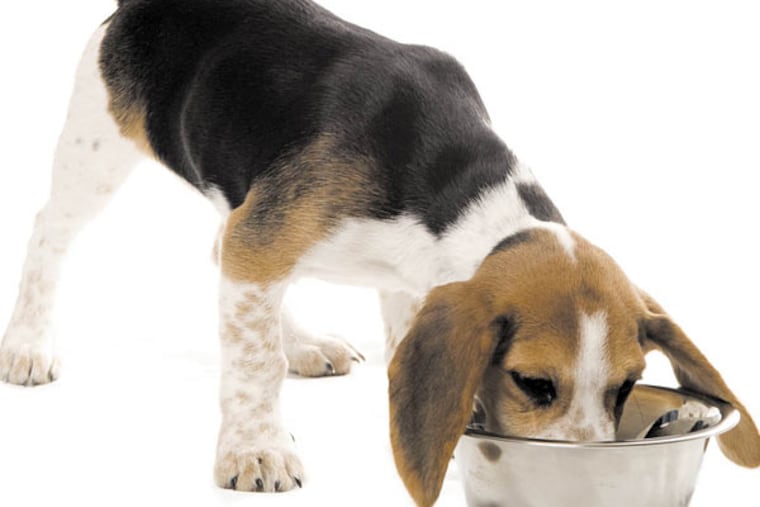Here's something to chew on: Bad pet food
Nothing is certain in life except death and taxes and, increasingly, pet food and treat recalls.

NOTHING is certain in life except death and taxes and, increasingly, pet food and treat recalls. There were 33 in 2013. On average, that's one every 11 days. Between 2008 and 2012, the Food and Drug Administration received more than 2,500 complaints from consumers regarding pet food and livestock feed. The complaints ranged from an animal refusing to eat a food to illness and death.
Food safety issues include microbial hazards - primarily salmonella bacteria; physical hazards, such as glass, metal or plastic found in food; and nutrient imbalances, such as inadequate levels of thiamine in cat food. Toxic levels of animal drugs have also been found in nonmedicated animal food, according to the FDA.
If you buy pet food, you should be able to rely on its safety. The FDA, after years of prodding, has for the first time proposed regulations that, if passed, would oversee the manufacture of pet food and set standards to help prevent contamination.
The proposal benefits people, too. They can acquire foodborne illnesses from handling contaminated pet food or touching pets who have eaten contaminated food.
Among the suggested changes: Manufacturers would be required to set out a written food-safety plan, put in place controls for likely hazards, maintain certain standards of cleanliness, implement record-keeping provisions and have a written plan for responding to outbreaks of food-borne illnesses. Inspectors will have more power to act before contaminated products reach store shelves and to restrict imports from suppliers who don't meet the new standards.
If the proposal passes, manufacturers will have one year to meet the new requirements. Smaller businesses will have two to three years to comply.
Because nothing is ever completely safe, pets can still be vulnerable to contaminated food. Here are steps you can take to reduce your dog's or cat's risk.
* Mix it up. Don't feed the same brand or flavor all the time. If you rotate food frequently, your pet will be less likely to encounter a bad batch.
* Call the manufacturer. Use the toll-free number on the bag or can to ask about ingredient quality, safety protocols and sourcing of ingredients. Often, ingredients are imported from other countries, including China or Egypt.
* Choose undamaged containers. The Centers for Disease Control recommends avoiding bags with visible signs of damage to the packaging, such as tears or discoloration, and cans with dents.
* Photograph package codes and expiration dates so you have a record if there's a problem.
* Scoop food out of the container using a clean measuring scoop, spoon or cup, not your pet's food bowl.
* Wash pet food dishes in hot, soapy water after every meal or run them through the dishwasher. It will kill bacteria - and besides, your pet doesn't want to eat out of a dirty dish any more than you do.
* Report any adverse reactions to foods or treats to the FDA's Safety Reporting Portal at safetyreporting.hhs.gov.